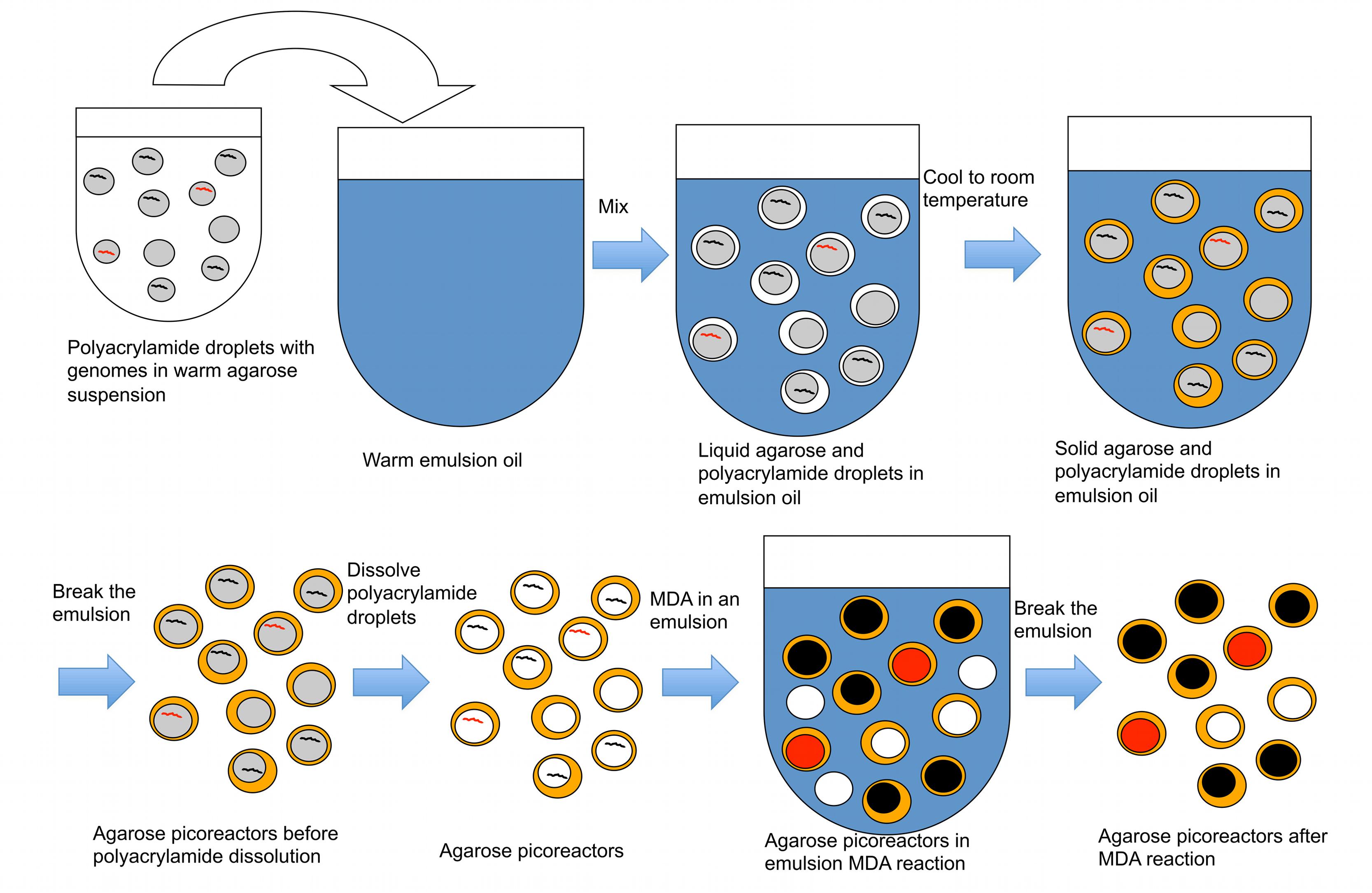

T1 - Selection of green fluorescent proteins by in vitro compartmentalization using microbead-display libraries The result shows that our approach has great potential for practical applications in improving the properties or identifying new properties of enzymes, ribozymes, and their regulators.", Moreover, by employing this approach, we screened a library of green fluorescent protein (GFP) genes containing random sequences in the chromophore region and obtained genes encoding GFPs with different spectral characteristics in only a single round of screening. We showed that this approach could increase the levels of protein synthesized compared with conventional IVC. To overcome the problems, we devised an alternative approach using microbeads displaying multiple copies of single genes prepared by on-bead emulsion PCR. However, in general, IVC requires confinement of a gene library in each compartment at the single-molecule level, resulting in the low expression level and activity of the protein and difficulty in recovering the DNA. IVC provides a flexible platform for the selection and directed evolution of peptides, proteins, and RNAs with the desired catalytic, binding, and regulatory activities. The result shows that our approach has great potential for practical applications in improving the properties or identifying new properties of enzymes, ribozymes, and their regulators.Ībstract = "In vitro compartmentalization (IVC) is a method to link genotype and phenotype by confining DNA and an in vitro gene expression system in cell-like compartments such as water-in-oil microdroplets. In vitro compartmentalization (IVC) is a method to link genotype and phenotype by confining DNA and an in vitro gene expression system in cell-like compartments such as water-in-oil microdroplets.


 0 kommentar(er)
0 kommentar(er)
